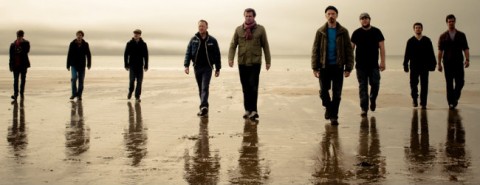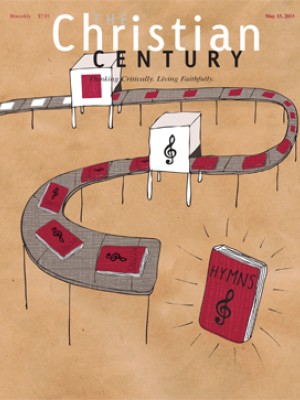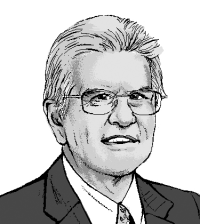Port Talbot Passion
Recently, the Welsh industrial town of Port Talbot was the setting for a play that has been described as the greatest theatrical event in 21st-century Britain. Quite apart from its artistic merits, the work offers a powerful reaffirmation of the residual power of Christian imagery in one of the world’s most secular societies.
The play has been made into a film, The Gospel of Us. Its director and designer is Dave McKean, a near-legendary figure in the world of comics (The Sandman) and pop culture, which raises the odds that the film will be released in the United States.
Read our latest issue or browse back issues.
I confess to a vested interest here: Port Talbot is my hometown. The community has suffered enormously in recent decades. Port Talbot was a classic boom town in the 1960s, at its peak employing some 20,000 in its gargantuan steelworks. By the 1980s, that industry had collapsed, leaving behind a grim rustbelt world, a depressed and depressing place. Large sections of the town were devastated by a brutally insensitive freeway development that tore communities apart. In every sense, the town has been bypassed.
Enter my fellow Port Talbot native, the dazzlingly versatile actor Michael Sheen. In 2011, Sheen conceived a wildly ambitious scheme to stage a Passion play that in effect took over the whole town as its stage. Ultimately, some 20,000 residents would participate in various scenes. Adding enormously to the theatrical impact is Port Talbot’s natural scenery, including some breathtaking seashore and dunes that featured unforgettably in the event.
The Gospel of Us is not a straightforward retelling of the New Testament. Sheen’s central character is a confused and conflicted human being, a young father, who suffers a psychic collapse and loses his memory. He regains both memory and identity when, being baptized by John in the sea, he begins his mission as the Teacher and comes to deliver the truth given him by his Father. He will give voice to the voiceless and restore memory and wholeness to a dying town. In its emphasis on memory and forgetting, sleep and awakening, the work often strikes a Gnostic note.
The career of the awakened Teacher closely follows that of Jesus. We see the calling of the apostles, the feeding of the 5,000 and the meeting with the woman taken in adultery. However, these events take place in firmly modern and local settings. Much of the action takes place in a downtown shopping mall and nearby council offices, while the Last Supper is set in a workingmen’s club. The Father—Dad—looks down on the action from his work as a roofer. (The extensive use of public and official facilities in such a context says much about the relationship between sacred and secular in Great Britain. Imagine trying to stage anything comparably devotional in an American city.)
The Teacher meets growing opposition from ICU, the diabolical corporate/political forces that hold the town in thrall—the ones who have ruined the community in recent years and who now threaten it with outright destruction. These dark oppressors seek at all costs to prevent the town’s people from learning to remember and to speak out. Betrayed, the Teacher is sentenced to death. Crowds follow him for miles through the streets as he moves toward his bloody execution, soaked in blood, wearing a crown of thorns and carrying his cross.
The procession scene is extraordinarily moving, as is the alarmingly realistic crucifixion. Both had a stunning impact on observers, even those with little investment in the traditional story. Journalist Allison Pearson reported participating in the mass procession to the cross but flagged under the pressure of heat and numbers. She wanted to bail out and leave, but her daughters refused strenuously, declaring: “We can’t leave Jesus now. His cross is so heavy. If he can do it, so can we!”
So yes, this is a classic Passion play, but with critical differences. As the Teacher dies, he sees in a vision the resurrection of the town. He cries out the lost names of the destroyed communities and places. Incorporated into the Teacher, each lost place returns to life and memory. In the final scene, the Teacher’s followers gather around his crucified body, knowing that “it is finished.” But the body is not there and has been replaced by flowers. The Teacher then appears in his full glory, proclaiming that “IT HAS BEGUN.”
Michael Sheen has stated that his message is not meant to be Christian: the Teacher is not, precisely, Jesus. But whatever Sheen’s intentions, The Gospel of Us is likely to overwhelm a Christian audience. Even viewers who have never heard of Port Talbot are irresistibly inspired to apply the message of community resurrection to places they know themselves. This is a magnificent achievement.








